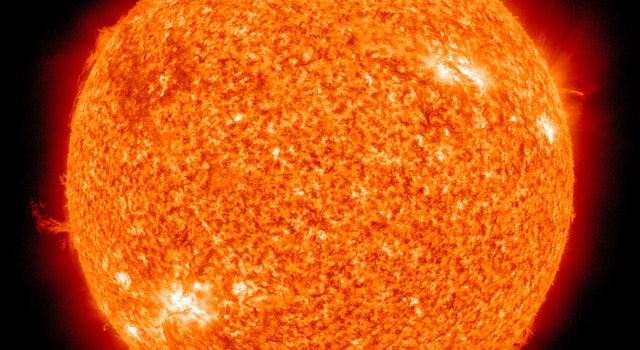How Long Would It Take To Travel To The Sun?
How long will it take the spacecraft to reach there? It depends on the mode of travel; it will take 19 years for you to arrive at the Sun by plane at 885 km/h (550 mph), or the equivalent of 177 years driving at 95 kilometers per hour (60 miles per hour), which is equivalent to 3,536 years walking there at 4.8 kilometers per hour (3 mph).
How Long Will It Take A Spacecraft To Get To The Sun?
It is challenging to foresee a spacecraft’s path toward the Sun. A hypothetical spacecraft that was launched from Earth and continuously traveled at a speed of about 153,454 miles (or 246,960 kilometers) per hour would arrive at the Sun in 606 hours, or 25 days.
Factors Affecting Travel Time
A variety of factors are considered when determining the length of a spacecraft’s journey towards the Sun. The factors that determine this include the speed of the spacecraft, its propulsion system, and the course of travel. Let’s examine each of these components in depth.
Speed
The speed of a spacecraft’s travel has a significant impact on the time it takes to travel. For example, if we think of a spacecraft traveling at a speed of 30 miles per hour (48,280 kilometers per hour), It would take about 160 days to get to the Sun. But getting to this speed is a daunting task that requires sophisticated propulsion systems.
Propulsion Systems
In order to accelerate a spacecraft to the speed required to travel to the Sun, sophisticated propulsion technology is essential. Spacecraft currently depend on propulsion systems that are chemical, like solid or liquid rocket engines. But they are limited by the quantity of fuel they are able to carry. Alternative methods of propulsion, like the use of ion propulsion, are being investigated for space missions in the future.
Trajectory
The path a spacecraft takes will also impact the speed at which it travels. If a spacecraft travels directly towards the sun, it is likely to encounter enormous gravitational forces, which make it difficult to achieve the speed desired. Thus, spacecraft frequently utilize gravitational aids from other celestial objects, like planets, in order to gain speed and reduce the time required to travel. The intricate trajectories need meticulous calculation and planning.
Existing Missions to the Sun
While no spacecraft has directly touched the Sun’s surface, a number of initiatives have been launched in order to investigate our closest star. One of these missions includes NASA’s Parker Solar Probe, which was launched in 2018. The Parker Solar Probe’s mission is to reach closer to the sun than any spacecraft that has been built and to endure extreme temperatures and intense radiation.
How Long Will It Take To Reach The Sun Using An Automobile?
The sun is typically 93 million miles away from the planet. To travel there at 65 mph would take 1,430,769 hours. To travel there at 65 mph would require 59,615 days. To drive there would take 163 years.
The Sun’s Distance and Temperature
Before we begin our imaginary journey, we need to identify some of the fundamental facts regarding the Sun. The Sun is 393 million miles (150 million kilometers) away from Earth. While this distance could be significant, it’s actually the scorching heat of the Sun that is the biggest obstacle for anyone thinking of getting there via vehicle.
The heat of the Sun is estimated to be 993 degrees Fahrenheit (5,500 degrees Celsius). To help put this into perspective, think about how the average tire on a car begins to melt at temperatures that exceed 300 °F (149 °C). It is clear that a typical vehicle will become a heap of molten metal before it is even closer to Sun.
Overcoming the Earth’s Atmosphere
In addition to the extreme heat, a major obstacle to achieving our destination, the sun, comes from the atmosphere of Earth. As we rise to the top, our atmosphere gets thinner until we arrive at the space vacuum. The atmosphere serves as a shield of protection, blocking harmful solar radiation from entering our bodies and creating the conditions that make existence on Earth possible.
But when we move towards the Sun, we will need to be free of the gravity pull of Earth, extending the limits of the atmosphere. The speed at which we can escape, around 25.020 miles per hour (40,270 km/hour), is a difficult challenge, even for the most advanced spacecraft or cars.
The Limitations of Car Technology
If we were able to beat the difficulties of temperature, distance, and the Earth’s atmosphere, however, our cars themselves would have some significant limitations. While automobiles are definitely incredible inventions, they were intended for use on the ground and are not designed to endure the harsh conditions of space.
A lack of pressure in the air, as well as extreme temperatures and radiation from space, could cause serious damage to a vehicle’s electrical and mechanical components. In addition, the absence of gravity would make the normal functioning of a vehicle impossible. With no friction between the road and tires, steering, braking, and acceleration are useless.
Alternative Means of Space Travel
Although traveling to the Sun by car is just an imagined scenario, human inventiveness has led to alternative methods of exploring the universe. Space probes that are advanced and spacecraft that are manned, such as the Apollo missions and more recent missions to Mars, have shown our capability to go beyond Earth’s limits.
The spacecraft are carefully designed so that they can withstand the harsh environment of space. They’re also outfitted with cutting-edge technology that can explore and collect information. But, even with the most advanced technology, it will take many years for these spacecraft to travel to distant celestial bodies such as Mars and even the Sun.
How Much Time Would It Take To Travel To Neptune?
Neptune is around 2.7 billion miles from Earth at its nearest location. This huge distance poses an enormous challenge for any mission that might be planned to the Blue Giant. In order to put it in perspective, the distance that exists between Earth and the Sun is approximately 9 million miles. So, getting to Neptune requires an astronomical distance greater than 28 times the distance of Earth’s distance to the Sun.
The Speed of Spacecraft
The speed of the spacecraft is a key factor in determining the length of the trip to Neptune. To speed up travel, spacecraft must reach incredible speeds. Today, the fastest human-made spacecraft is known as the Parker Solar Probe, which travels at 430,000 mph (700,000 km/hour) in relation to the Sun. Even at this incredible speed, it will take a lot of time to get to Neptune.
Available Propulsion Technologies
If you are considering how long it will take to travel to Neptune, it is essential to look into the current and possible propulsion technology that could aid in this flight. The traditional chemical rockets, although effective for shorter distances, are not suitable for such large interplanetary missions because of their insufficient capacity for fuel. Instead, engineers and scientists are looking at alternative strategies like ion propulsion, nuclear propulsion, or even theories such as warp drives.
Ion Propulsion
Ion propulsion is a promising technique that can significantly cut the time required to travel to Neptune. The method of propulsion requires the expulsion of charged particles, known as Ions, at very high speeds to create thrust. While ion engines have a significantly lower rate of acceleration than conventional rockets, they are extremely efficient and run for longer periods of time. Ion propulsion has been used successfully in numerous space missions, such as NASA’s Dawn spacecraft as well as Europe’s Space Agency’s BepiColombo mission to Mercury.
Nuclear Propulsion
Nuclear propulsion, in particular the nuclear thermal propellant (NTP) as well as nuclear electrical propulsion (NEP), is believed to have the potential to transform traveling deep into space. NTP makes use of the energy produced from nuclear reactions to create a propellant that is then released at high speeds to generate thrust. NEP, however, in contrast, utilizes nuclear power to create electricity that is later utilized for the acceleration of charged particles like ion propulsion. NTP and NEP benefit from high specific impulses, which allow faster travel to distant places similar to Neptune.
Challenges and Considerations
While advances in propulsion technology provide exciting possibilities to speed up interplanetary travel, there are a number of issues and concerns that need to be considered. They include:
- Energy requirements: Long-term missions require large amounts of power, which requires the development of strong and reliable energy sources.
- Protection from Radiation: Astronauts aboard will require adequate protection from the intense cosmic radiation that is encountered when traveling for extended periods in space.
- Life Support: Systems Life Support Systems that are sustainable and capable of supplying water, food, and breathable air throughout the journey should be designed.
- Communication and Navigation: Maintaining exact navigation and reliable communication channels with Earth is essential throughout the duration of the
Future Prospects
As technology advances, the vision of being able to reach Neptune in a reasonable amount of time could become a reality. Space agencies and scientists around the world are working hard on new solutions to address the difficulties faced by long-duration space travel. Breakthroughs in propulsion technology and energy generation, as well as life support systems, could open the way for the future of astronauts or unmanned missions to the mysterious planet.
FAQ’s
How long would it take to travel to the Sun?
The travel time to the Sun would depend on the method of transportation and the speed of the spacecraft. However, using current technology, a trip to the Sun would take several years, considering the immense distance and the need to counteract the Sun’s gravitational pull.
Why does it take so long to travel to the Sun?
The Sun is located approximately 93 million miles (150 million kilometers) away from Earth. The vast distance and the gravitational pull of the Sun make it challenging to reach. Additionally, the spacecraft needs to carry enough fuel and provisions for a long-duration journey.
Can we use existing spacecraft to travel to the Sun?
No, current spacecraft technology is not suitable for traveling to the Sun. The extreme heat and radiation near the Sun would damage or destroy most spacecraft. Furthermore, the tremendous gravitational pull of the Sun would require advanced propulsion systems that are not currently available.
How fast would a spacecraft need to travel to reach the Sun?
To reach the Sun, a spacecraft would need to achieve a velocity of approximately 550,000 miles per hour (880,000 kilometers per hour) to counteract the Sun’s gravitational pull and enter a stable orbit. This is significantly faster than any existing spacecraft can travel.
Are there any plans to send a spacecraft to the Sun?
NASA’s Parker Solar Probe is a mission designed to study the Sun up close. While it is not directly traveling to the Sun, it will come within about 4 million miles (6 million kilometers) of the Sun’s surface, which is closer than any previous mission. The probe was launched in 2018 and is expected to provide valuable insights into the Sun’s atmosphere and solar wind.
Is it possible to land on the Sun?
No, it is not possible to land on the Sun. The Sun is a massive ball of hot plasma, and its surface temperature exceeds 5,500 degrees Celsius (9,932 degrees Fahrenheit). Any spacecraft or object that approaches the Sun’s surface would be vaporized due to the extreme heat and intense radiation.
How Long Would It Take To Travel To The Sun?
How long will it take the spacecraft to reach there? It depends on the mode of travel; it will take 19 years for you to arrive at the Sun by plane at 885 km/h (550 mph), or the equivalent of 177 years driving at 95 kilometers per hour (60 miles per hour), which is equivalent to 3,536 years walking there at 4.8 kilometers per hour (3 mph).
How Long Will It Take A Spacecraft To Get To The Sun?
It is challenging to foresee a spacecraft’s path toward the Sun. A hypothetical spacecraft that was launched from Earth and continuously traveled at a speed of about 153,454 miles (or 246,960 kilometers) per hour would arrive at the Sun in 606 hours, or 25 days.
Factors Affecting Travel Time
A variety of factors are considered when determining the length of a spacecraft’s journey towards the Sun. The factors that determine this include the speed of the spacecraft, its propulsion system, and the course of travel. Let’s examine each of these components in depth.
Speed
The speed of a spacecraft’s travel has a significant impact on the time it takes to travel. For example, if we think of a spacecraft traveling at a speed of 30 miles per hour (48,280 kilometers per hour), It would take about 160 days to get to the Sun. But getting to this speed is a daunting task that requires sophisticated propulsion systems.
Propulsion Systems
In order to accelerate a spacecraft to the speed required to travel to the Sun, sophisticated propulsion technology is essential. Spacecraft currently depend on propulsion systems that are chemical, like solid or liquid rocket engines. But they are limited by the quantity of fuel they are able to carry. Alternative methods of propulsion, like the use of ion propulsion, are being investigated for space missions in the future.
Trajectory
The path a spacecraft takes will also impact the speed at which it travels. If a spacecraft travels directly towards the sun, it is likely to encounter enormous gravitational forces, which make it difficult to achieve the speed desired. Thus, spacecraft frequently utilize gravitational aids from other celestial objects, like planets, in order to gain speed and reduce the time required to travel. The intricate trajectories need meticulous calculation and planning.
Existing Missions to the Sun
While no spacecraft has directly touched the Sun’s surface, a number of initiatives have been launched in order to investigate our closest star. One of these missions includes NASA’s Parker Solar Probe, which was launched in 2018. The Parker Solar Probe’s mission is to reach closer to the sun than any spacecraft that has been built and to endure extreme temperatures and intense radiation.
How Long Will It Take To Reach The Sun Using An Automobile?
The sun is typically 93 million miles away from the planet. To travel there at 65 mph would take 1,430,769 hours. To travel there at 65 mph would require 59,615 days. To drive there would take 163 years.
The Sun’s Distance and Temperature
Before we begin our imaginary journey, we need to identify some of the fundamental facts regarding the Sun. The Sun is 393 million miles (150 million kilometers) away from Earth. While this distance could be significant, it’s actually the scorching heat of the Sun that is the biggest obstacle for anyone thinking of getting there via vehicle.
The heat of the Sun is estimated to be 993 degrees Fahrenheit (5,500 degrees Celsius). To help put this into perspective, think about how the average tire on a car begins to melt at temperatures that exceed 300 °F (149 °C). It is clear that a typical vehicle will become a heap of molten metal before it is even closer to Sun.
Overcoming the Earth’s Atmosphere
In addition to the extreme heat, a major obstacle to achieving our destination, the sun, comes from the atmosphere of Earth. As we rise to the top, our atmosphere gets thinner until we arrive at the space vacuum. The atmosphere serves as a shield of protection, blocking harmful solar radiation from entering our bodies and creating the conditions that make existence on Earth possible.
But when we move towards the Sun, we will need to be free of the gravity pull of Earth, extending the limits of the atmosphere. The speed at which we can escape, around 25.020 miles per hour (40,270 km/hour), is a difficult challenge, even for the most advanced spacecraft or cars.
The Limitations of Car Technology
If we were able to beat the difficulties of temperature, distance, and the Earth’s atmosphere, however, our cars themselves would have some significant limitations. While automobiles are definitely incredible inventions, they were intended for use on the ground and are not designed to endure the harsh conditions of space.
A lack of pressure in the air, as well as extreme temperatures and radiation from space, could cause serious damage to a vehicle’s electrical and mechanical components. In addition, the absence of gravity would make the normal functioning of a vehicle impossible. With no friction between the road and tires, steering, braking, and acceleration are useless.
Alternative Means of Space Travel
Although traveling to the Sun by car is just an imagined scenario, human inventiveness has led to alternative methods of exploring the universe. Space probes that are advanced and spacecraft that are manned, such as the Apollo missions and more recent missions to Mars, have shown our capability to go beyond Earth’s limits.
The spacecraft are carefully designed so that they can withstand the harsh environment of space. They’re also outfitted with cutting-edge technology that can explore and collect information. But, even with the most advanced technology, it will take many years for these spacecraft to travel to distant celestial bodies such as Mars and even the Sun.
How Much Time Would It Take To Travel To Neptune?
Neptune is around 2.7 billion miles from Earth at its nearest location. This huge distance poses an enormous challenge for any mission that might be planned to the Blue Giant. In order to put it in perspective, the distance that exists between Earth and the Sun is approximately 9 million miles. So, getting to Neptune requires an astronomical distance greater than 28 times the distance of Earth’s distance to the Sun.
The Speed of Spacecraft
The speed of the spacecraft is a key factor in determining the length of the trip to Neptune. To speed up travel, spacecraft must reach incredible speeds. Today, the fastest human-made spacecraft is known as the Parker Solar Probe, which travels at 430,000 mph (700,000 km/hour) in relation to the Sun. Even at this incredible speed, it will take a lot of time to get to Neptune.
Available Propulsion Technologies
If you are considering how long it will take to travel to Neptune, it is essential to look into the current and possible propulsion technology that could aid in this flight. The traditional chemical rockets, although effective for shorter distances, are not suitable for such large interplanetary missions because of their insufficient capacity for fuel. Instead, engineers and scientists are looking at alternative strategies like ion propulsion, nuclear propulsion, or even theories such as warp drives.
Ion Propulsion
Ion propulsion is a promising technique that can significantly cut the time required to travel to Neptune. The method of propulsion requires the expulsion of charged particles, known as Ions, at very high speeds to create thrust. While ion engines have a significantly lower rate of acceleration than conventional rockets, they are extremely efficient and run for longer periods of time. Ion propulsion has been used successfully in numerous space missions, such as NASA’s Dawn spacecraft as well as Europe’s Space Agency’s BepiColombo mission to Mercury.
Nuclear Propulsion
Nuclear propulsion, in particular the nuclear thermal propellant (NTP) as well as nuclear electrical propulsion (NEP), is believed to have the potential to transform traveling deep into space. NTP makes use of the energy produced from nuclear reactions to create a propellant that is then released at high speeds to generate thrust. NEP, however, in contrast, utilizes nuclear power to create electricity that is later utilized for the acceleration of charged particles like ion propulsion. NTP and NEP benefit from high specific impulses, which allow faster travel to distant places similar to Neptune.
Challenges and Considerations
While advances in propulsion technology provide exciting possibilities to speed up interplanetary travel, there are a number of issues and concerns that need to be considered. They include:
- Energy requirements: Long-term missions require large amounts of power, which requires the development of strong and reliable energy sources.
- Protection from Radiation: Astronauts aboard will require adequate protection from the intense cosmic radiation that is encountered when traveling for extended periods in space.
- Life Support: Systems Life Support Systems that are sustainable and capable of supplying water, food, and breathable air throughout the journey should be designed.
- Communication and Navigation: Maintaining exact navigation and reliable communication channels with Earth is essential throughout the duration of the
Future Prospects
As technology advances, the vision of being able to reach Neptune in a reasonable amount of time could become a reality. Space agencies and scientists around the world are working hard on new solutions to address the difficulties faced by long-duration space travel. Breakthroughs in propulsion technology and energy generation, as well as life support systems, could open the way for the future of astronauts or unmanned missions to the mysterious planet.
FAQ’s
How long would it take to travel to the Sun?
The travel time to the Sun would depend on the method of transportation and the speed of the spacecraft. However, using current technology, a trip to the Sun would take several years, considering the immense distance and the need to counteract the Sun’s gravitational pull.
Why does it take so long to travel to the Sun?
The Sun is located approximately 93 million miles (150 million kilometers) away from Earth. The vast distance and the gravitational pull of the Sun make it challenging to reach. Additionally, the spacecraft needs to carry enough fuel and provisions for a long-duration journey.
Can we use existing spacecraft to travel to the Sun?
No, current spacecraft technology is not suitable for traveling to the Sun. The extreme heat and radiation near the Sun would damage or destroy most spacecraft. Furthermore, the tremendous gravitational pull of the Sun would require advanced propulsion systems that are not currently available.
How fast would a spacecraft need to travel to reach the Sun?
To reach the Sun, a spacecraft would need to achieve a velocity of approximately 550,000 miles per hour (880,000 kilometers per hour) to counteract the Sun’s gravitational pull and enter a stable orbit. This is significantly faster than any existing spacecraft can travel.
Are there any plans to send a spacecraft to the Sun?
NASA’s Parker Solar Probe is a mission designed to study the Sun up close. While it is not directly traveling to the Sun, it will come within about 4 million miles (6 million kilometers) of the Sun’s surface, which is closer than any previous mission. The probe was launched in 2018 and is expected to provide valuable insights into the Sun’s atmosphere and solar wind.
Is it possible to land on the Sun?
No, it is not possible to land on the Sun. The Sun is a massive ball of hot plasma, and its surface temperature exceeds 5,500 degrees Celsius (9,932 degrees Fahrenheit). Any spacecraft or object that approaches the Sun’s surface would be vaporized due to the extreme heat and intense radiation.










